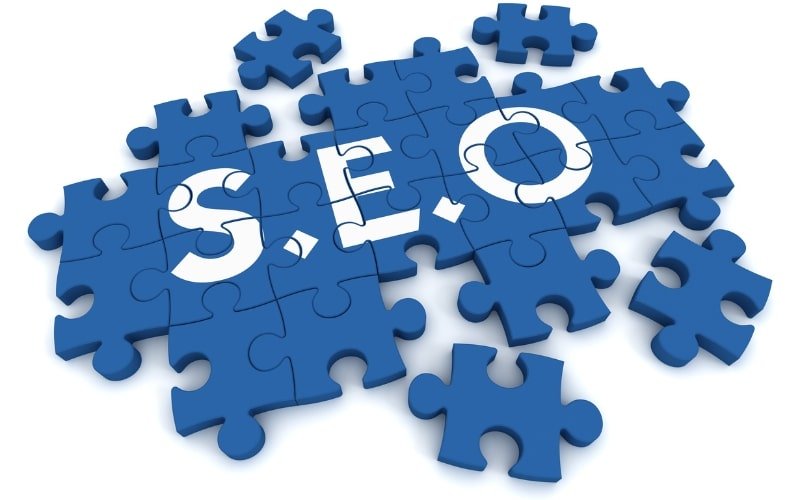Keyword optimization is one of the most critical elements in search engine optimization (SEO). By strategically incorporating relevant keywords into your content, you make it easier for search engines to understand what your page is about and rank it accordingly. However, keyword optimization is not just about stuffing keywords into your text; it’s about making your content relevant, valuable, and easy to find. In this article, we’ll explore effective ways to optimize your content for keywords without compromising readability or user experience.
Start with Keyword Research

The foundation of any successful keyword optimization strategy is thorough keyword research. This step is essential for optimizing your content and ensuring it aligns with the search terms your audience uses. Before you begin writing, it’s crucial to identify the keywords that potential customers or readers are searching for when looking for products, services, or information related to your industry. By understanding what your audience is looking for, you can tailor your content to meet their needs effectively.
To start, use tools like Google Keyword Planner, Ahrefs, and SEMrush to uncover relevant keywords. These tools provide insights into search volume, competition, and trends, helping you make informed decisions. Additionally, tools like AnswerThePublic can offer unique question-based keyword suggestions, which are excellent for optimizing your content to match user intent.
Choosing the right mix of keywords is equally important. A balanced approach involves targeting both short-tail and long-tail keywords. Short-tail keywords are broad terms like “workouts,” which often have high search volumes but stiff competition. On the other hand, long-tail keywords, such as “best workouts for beginners at home,” are more specific and often indicate a user’s intent more clearly. Including a mix of both helps in optimizing your content for a wider audience while addressing specific search queries.
Once you’ve selected your keywords, the next step is integrating them strategically. Focus on incorporating them naturally within your headings, subheadings, and throughout the body of your text. This ensures your content remains engaging and readable while still optimizing your content for search engines. Avoid overstuffing keywords, as this can negatively impact readability and search engine rankings. Instead, aim for strategic placement that enhances both SEO and user experience.
Another important factor is understanding search intent. This involves identifying whether a user is looking for informational, transactional, or navigational content. For instance, a user searching for “how to start a fitness routine” is likely seeking informative content, while someone searching for “buy fitness equipment online” has transactional intent. Tailoring your content to these intents is a critical part of optimizing your content to match audience expectations.
Incorporating keyword research into your content strategy not only improves your chances of ranking higher on search engines but also enhances your content’s relevance. By focusing on what your audience is searching for and addressing their needs directly, you create content that resonates and performs well. Remember, optimizing your content is an ongoing process, and regular updates based on new keyword data can keep your strategy effective over time.
Use Keywords in Title Tags

The title tag is one of the most important places to include your primary keyword. Title tags are the first thing users see in search results, and they play a significant role in search engine rankings. Make sure your main keyword appears naturally in the title and clearly describes what the page is about.
For example, instead of writing a generic title like “Fitness Tips,” you could optimize it by saying “Best Fitness Tips for Beginners: Start Your Workout Journey.”
Optimize Meta Descriptions
Meta descriptions might not directly boost rankings, but they significantly impact click-through rates (CTR), which can indirectly affect SEO performance. Crafting a well-written meta description is a key step in optimizing your content to attract more users from search engine results pages (SERPs). A compelling meta description gives users a reason to click your link over others, making it a crucial aspect of driving organic traffic.
Including your primary keyword in the meta description is essential for clarity and relevance. When users see their search query reflected in your description, they’re more likely to perceive your page as answering their needs. This alignment not only improves user trust but also signals to search engines that your content is directly related to the search intent, further optimizing your content for visibility.
Characteristics of a Strong Meta Description
A good meta description should be concise, persuasive, and informative. Aim for 150–160 characters to ensure the entire description appears in the SERPs without being cut off. To enhance engagement:
- Use action-oriented language to inspire clicks.
- Highlight unique selling points or benefits to the reader.
- Incorporate your target keyword naturally, further optimizing your content.
For instance, a meta description like, “Need quick, healthy recipes? Discover delicious 15-minute meals perfect for busy weeknights,” appeals to both user intent and search engine algorithms.
Why Meta Descriptions Matter
While meta descriptions don’t directly influence rankings, they act as a bridge between search engines and users. A well-crafted description improves the likelihood of clicks, driving more traffic to your site. Higher CTRs can signal to search engines that your page is valuable, indirectly enhancing your rankings. Thus, focusing on meta descriptions is an integral part of optimizing your content strategy.
Additionally, updating outdated or underperforming meta descriptions provides an easy win for improving organic performance. If a page ranks well but receives low clicks, revisiting the meta description can bring substantial gains. Ensure each description reflects the page’s purpose and speaks directly to the user’s needs, reinforcing the importance of optimizing your content.
Use Keywords in Headings (H1, H2, H3)
Headings not only make your content easier to read but also help search engines understand the structure of your page. Your H1 tag, typically the main headline, should include your primary keyword, while H2 and H3 tags should contain variations or related keywords.
For example, if your H1 is “Best Workouts for Beginners,” your H2 could be “How to Start a Workout Routine,” and an H3 could be “Benefits of Regular Exercise.” This structure ensures that both users and search engines easily grasp the key topics covered in the content.
Integrate Keywords Naturally in the Content

Once you’ve determined your keywords, the next step is to integrate them naturally throughout your content. Focus on writing for your audience first, making the text flow smoothly while incorporating keywords in key areas. Avoid keyword stuffing, which can lead to a poor user experience and may result in search engines penalizing your page.
Include your primary keyword within the first 100-150 words of your content, and use it a few times throughout the text. Sprinkle related keywords and long-tail variations naturally to add context and depth to your writing. The goal is to enhance relevance without forcing keywords into awkward places.
Optimize Image Alt Text
Images are a powerful way to break up your content and improve user engagement. However, search engines can’t “see” images the way humans do, so it’s essential to include alt text (alternative text) for each image. Alt text provides a description of the image for search engines and visually impaired users, which is a key part of optimizing your content.
When writing alt text, use relevant keywords where appropriate, but ensure the description is accurate and descriptive. For example, instead of writing “image,” try “woman performing a beginner workout routine at home.” This not only helps search engines index your images but also plays a vital role in optimizing your content for accessibility and searchability.
Include Internal and External Links
Linking is an important aspect of SEO and a proven method for optimizing your content. Internal links connect different pages on your website, helping search engines understand the structure of your site and keeping users engaged with additional content. Make sure to use descriptive anchor text that includes relevant keywords, as this improves the chances of your site ranking well.
For example, if you mention “workout plans,” you could link to another blog post on your site that covers detailed workout routines. External links to authoritative websites can also provide context and additional value to your readers. By doing so, you are optimizing your content for both user experience and search engine algorithms, ensuring that it remains valuable and credible.
By focusing on elements like image alt text and links, you contribute significantly to optimizing your content, making it more accessible, engaging, and SEO-friendly. Remember, these small tweaks can have a large impact on the overall performance of your site, helping you achieve your goals in optimizing your content to its fullest potential.
Conclusion
Keyword optimization is a vital part of creating content that ranks well in search engines and serves your audience effectively. By conducting thorough keyword research and strategically incorporating those keywords into key areas like title tags, headings, meta descriptions, and image alt text, you can improve your page’s relevance and visibility. Remember to always prioritize quality and user experience over keyword stuffing, ensuring that your content is both informative and easy to read. When done correctly, keyword optimization can drive targeted traffic to your site and improve your overall SEO performance.

